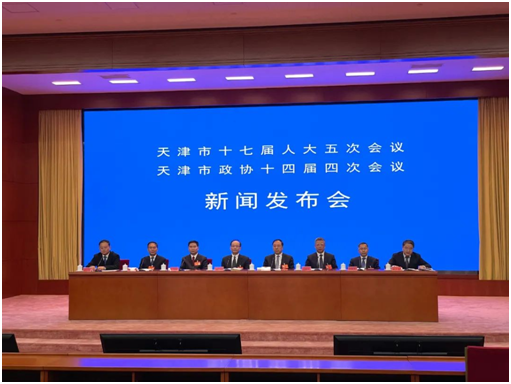Highlights of Tianjin’s draft 14th Five-Year Plan

Tianjin released its draft 14th Five-Year Plan (2021-25) at the annual session of the municipal people's congress, mapping its economic and social development in the years to come.
The draft has four highlights: promote the coordinated development of the Beijing-Tianjin-Hebei Region, support the manufacturing industry, boost domestic consumption and promote Binhai New Area.
The city aims to enhance its high-tech manufacturing industries and international shipping and improve its financial services to support the real economy. The measures will assist the coordinated development of the Beijing-Tianjin-Hebei region and help the city function better within North China.
Tianjin has currently introduced 3,062 projects from the nation’s capital, Beijing, with an investment of 448.2 billion yuan($69.2 billion).
"The manufacturing sector in Tianjin is expected to drive synergistic growth within the Beijing-Tianjin-Hebei region, and the region is encouraged to take the manufacturing sector as a new engine," said Sun Minghua, head of the Beijing-Tianjin-Hebei coordinated development research center at the Tianjin Academy of Social Sciences.
The three areas have also teamed up to promote environmental protection and the high-speed rail network, he added.
During the 14th Five-Year Plan period (2021-25), the city will prioritize the manufacturing sector as its economic pillar. The traditional industrial hub has gathered strong momentum after major industrial upgrading, and it is now focusing on intelligent technologies and expanding emerging industries.
According to the draft, by 2025, the number of national high-tech enterprises in Tianjin will reach 11,600. The added value of Tianjin's manufacturing industry will account for 25 percent of the regional GDP.
Prioritizing the manufacturing industry doesn’t mean the city has forgotten about its service industries, though. It plans to boost domestic demand and position itself as an international and regional consumption center, gathering goods and international dealers to its port and airports. Tianjin will also explore new consumption experiences integrating social e-commerce and 5G.
The government will shape the coastal district of Binhai New Area into another urban center within Tianjin's downtown, and the area will continue optimizing Tianjin Port's functions and supporting transport facilities. Industries and professionals are regarded as fundamental for its urban development.
Environmental protection and ecological restoration will be an ongoing job in the coming years. The top ecological protection campaign announced last year, covering 736 square kilometers between the city's downtown and Binhai, has taken shape. By 2025, green and water areas will account for more than 65 percent of the green belt's total area.

Copyright ©
Tianjin Municipal Government. All rights reserved. Presented by China Daily.
京ICP备13028878号-35

